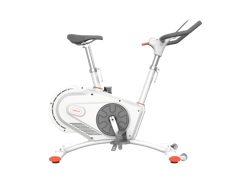Training is complicated. The topic we are discussing today is only a relatively basic but very effective training tool in the power training system – PMC state management function. I hope that through its application, we can help you find the core of scientific training.
The power trainer, which is different from the ordinary trainer, is to quantify the training process through accurate motion data. When we can reasonably accumulate our own sports data and master the basic analysis methods, we can intuitively get the strength, the length and the frequency of our training are reasonable or not, and whether it can bring the most effective and suitable training stimulation to the body.
The core of the training is overload and overcompensation, and to achieve proper overload, bring effective stimulation to the body, and stimulate the body to achieve the desired over-compensation. The process of countless over-compensation brings about the gradual strengthening of our body and the continuous advancement towards our goals.
Since we can get the data of each training exercise through the trainer, let’s take a look at the use of several basic data, and to find out what kind of information they can show to us.
Here we use several common terms: TSS, ATL, CTL, TSB.
TSS
TSS is the quantified value of each training load (intensity, duration) and the degree of stimulation of the body to the training. Although different bikers have different FTP capabilities, TSS can give each biker the corresponding value of the current practice pressure. Bikers with different FTP capabilities have an hourly TSS of 100, so for an hour of unit time, when your TSS is 100 means you are 100% fully outputting, and TSS 80 is equivalent to 80% of full output. Therefore, from the training point of view, TSS is only related to the biker’s own practice intensity and has little to do with the FTP difference of others.
ATL
ATL presents the average of TSS for the last 7 days (default setting and modifiable). The changes in ATL intuitively reflect the level of training in your week.
CTL
CTL presents the average of TSS for the last 42 days (also the default setting). Changes in CTL can reflect whether your training is systematic and regular overtime.
In the PMC chart, both ATL and CTL are dynamic curves that change every day. What influences the trend of the curve is the arrangement and combination of training. In practical applications, ATL represents the degree of physical fatigue (short-term training stress brings to the body’s stimulation level), and CTL represents physical energy changes (physical gain from long-term training effects).
TSB
TSB is simply can be seen as the difference between physical fitness (CTL) and fatigue (ATL). The TSB fluctuates up and down on the basis of the 0-axis. When ATL is significantly greater than CTL, the physical state will cause the TSB to quickly fall due to fatigue. TSB can also objectively reflect the training state of the body.
When TSB stays between -10 and 10 for a long time, training is insufficient for the body’s stimulation, the training effect is low. When the TSB is maintained between -10 and -30 (the first year of system training in the first year, should be -10 to -20), the body is in the appropriate training rhythm, bring better training benefits. When the TSB is lower than -30, it means that the short-term training load is somewhat beyond the normal range of the body. If the TSB is at -30 for a long time (more than half a month), it means that the training is over-exposed, the body will have more obvious feedback and the physical strength will be overdrawn.
So, the main problem around our daily power training is how to make TSB maintain the fluctuation between -10 and -30 as much as possible and how to make the CTL rise steadily. Therefore, when training with a power trainer, we recommended to fully understand the training essence of overload and over-compensation and gradually arrange your own training intensity and frequency. More scientific control can be achieved through PMC.
In theory, to maintain the TSB between -10 and -30, it means that the short-term training is always greater than the long-term training, that is, the ATL should always be greater than the CTL, and maintain a certain difference. The reason is very simple, but when it is actually implemented, it is very particular. How to keep ATL as large as possible than CTL? It means that the weekly TSS should be steadily rising and the weekly training plan should be regular and reasonable. Take the Onelap Calendar as an example:
In the calendar function of Onelap’s official website (the english version is coming soon) on the left is the personal training library, and on the right is the calendar plan, dragging the single plan from the training library on the left to the corresponding date of the calendar. Plan well and run Onelap app to train.
When the TSB cannot be maintained below -10, the most direct cause may be irregular training or insufficient frequency arrangement, resulting in insufficient overall training. Secondly, even if you can maintain stable training, you need to pay attention to whether the ATL and CTL are getting closer. The smaller the difference, the smaller the TSB value. It can be seen that in order to properly control the TSB, we can only force us to continuously increase the training load for ourselves. The training duration of each biker is limited by the conditions of life, work, etc., and the addition of TSS only makes a fuss about the power intensity combination. If our daily practice is the same, the body will adapt quickly to the load, and the training income for the same time will be greatly reduced. TSB can give us an answer. Knowing the use of the PMC, you can better understand the value of this kind of motion quantification of power training.
Using the power trainer to complete scientific and effective training is an indispensable lesson in the process of power training. The correct combination of the trainer and the software can bring about a leap in the training.







